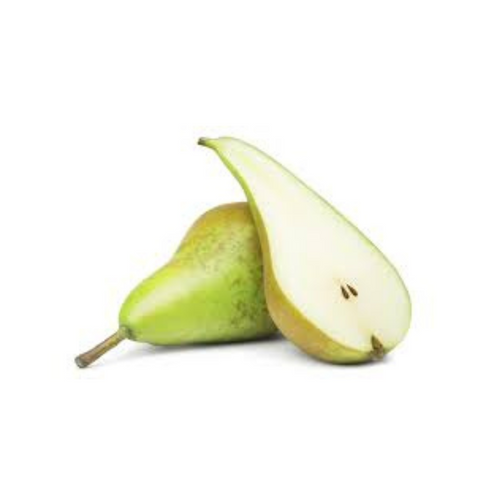
Conference pear 1kg
The Conference pear (Pyrus communis 'Conference') is a renowned European pear variety, particularly prevalent in the United Kingdom and across Europe. Developed in the late 19th century by Thomas Francis Rivers in Hertfordshire, England, it gained prominence after winning first prize at the National British Pear Conference in 1885, from which it derives its name citeturn0search0.
🍐 Characteristics
-
Appearance:Medium to large, elongated bottle-shaped fruit with a smooth green skin that often features russeting (a brownish, rough texture). As it ripens, the skin turns a pale yellow citeturn0search2
-
Flesh:Creamy white to pale yellow, melting, very juicy, and sweet with a pleasant flavor citeturn0search4
-
Flavor:Sweet and buttery, sometimes with a slight pink tinge in the flesh citeturn0search2
🌱 Cultivation
-
Growth The Conference pear tree is vigorous, productive, and bears fruit annually. It thrives in various soil types and is particularly resistant to scab, a common pear disease citeturn0search0.
-
Pollination While Conference is self-fertile, planting it alongside other pear varieties like 'Williams' can enhance fruit production citeturn0search0.
-
Harvesting Typically ripens from late September to early October. For storage, it's best to harvest slightly under-ripe fruits and allow them to ripen off the tree citeturn0search5.
🍽️ Culinary Uses
-
*Fresh Consumption: Ideal for eating raw due to its sweet and juicy fleh.
-
*Cooking: Suitable for baking, poaching, and roasting. Commonly used in desserts like tarts and crumbles, as well as in savory dishes paired with cheeses or meats citeturn0search.
-
*Storage: When stored in a cool environment, such as a refrigerator or ventilated cellar, Conference pears can be kept fresh until January citeturn0search.

